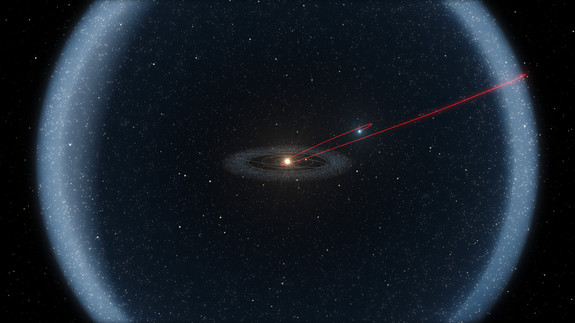
The Tailless Comet
Astronomers have discovered a new class of comet that’s (almost) entirely tailless. This class was found tanks to a rocky object coming from the edge of our solar system. Scientists have taken to calling the comet a ‘Manx object,’ after the tailless Manx cats.
The study’s lead author, Karen Meech from the University of Hawaii, spoke about the gravity of the discovery to Space.com, saying: “I always tell my students that science is 99-percent hard work, sometimes tedious, because the details really matter, but there is 1 percent of the time where there is the thrill of excitement, when you discover something new and unexpected and you know it is important. This was one of those times!”
The comet C/2014 S3 was found with Hawaii’s Pan-STARRS telescope. It was first discovered in 2014 and is located at a distance that’s over twice as far as Earth is from the Sun. Follow-up observations were made by the European Southern Observatory’s Very Large Telescope in Chile and the Canada-France-Hawaii Telescope.

The Rocky Comet
S3 has an 860-year-long orbit, which suggests that it had just come from the Oort cloud, a giant shell that surrounds the solar system and is made up of trillions of icy bodies, S3’s lack of ice also suggest that its origins lie in the inner solar system.
Olivier Hainaut, a co-author on the study, said that S3 is the first rocky comet. “It is very exciting — S3 would have been kicked out while the Earth was being formed, possibly even by the early-days Earth”
“It is very exciting — S3 would have been kicked out while the Earth was being formed, possibly even by the early-days Earth. S3 would then be a planetesimal like those which formed the Earth, but preserved since that time in the cold of outer space,” says Hainut.
The full study is detailed in the journal Science Advances.